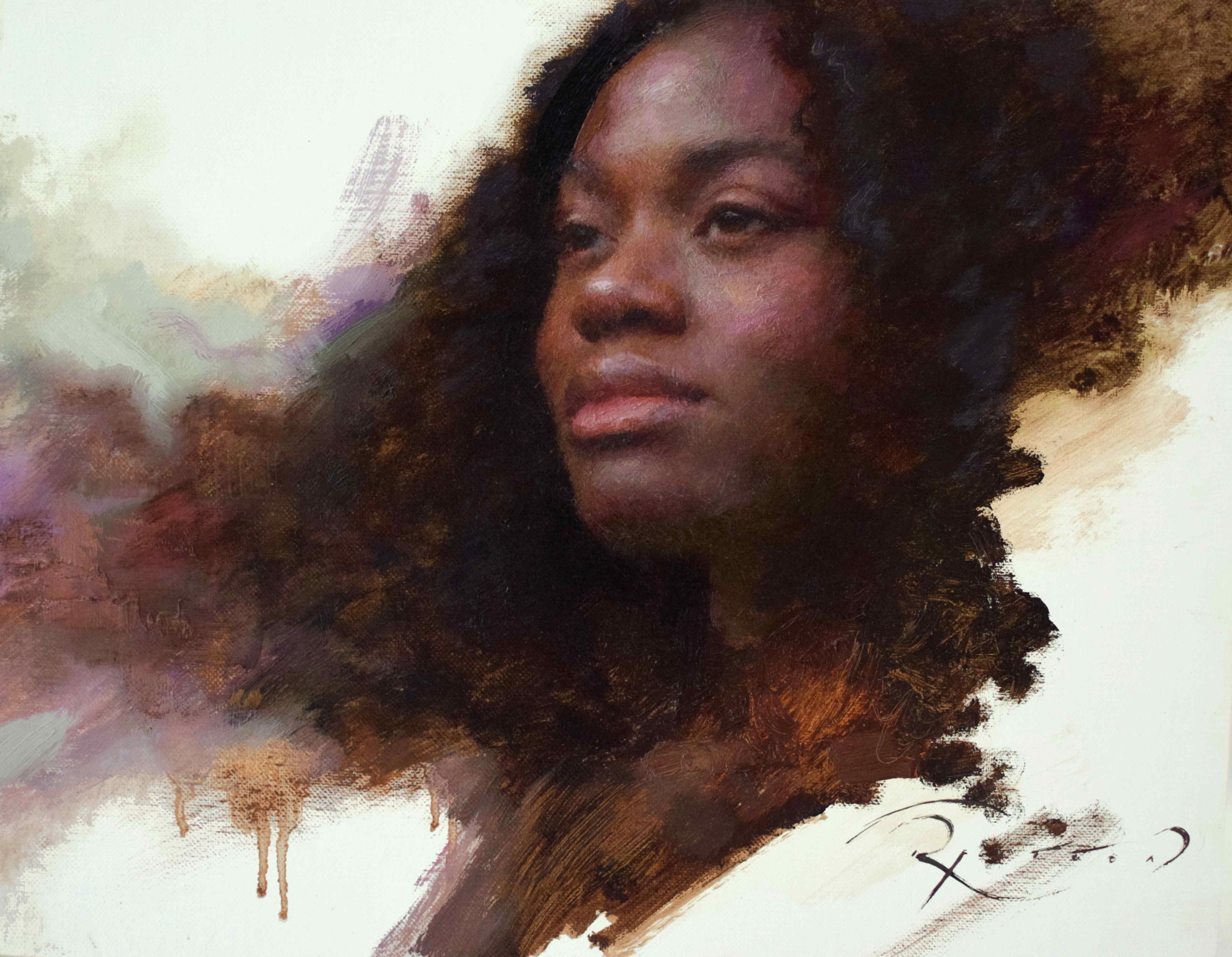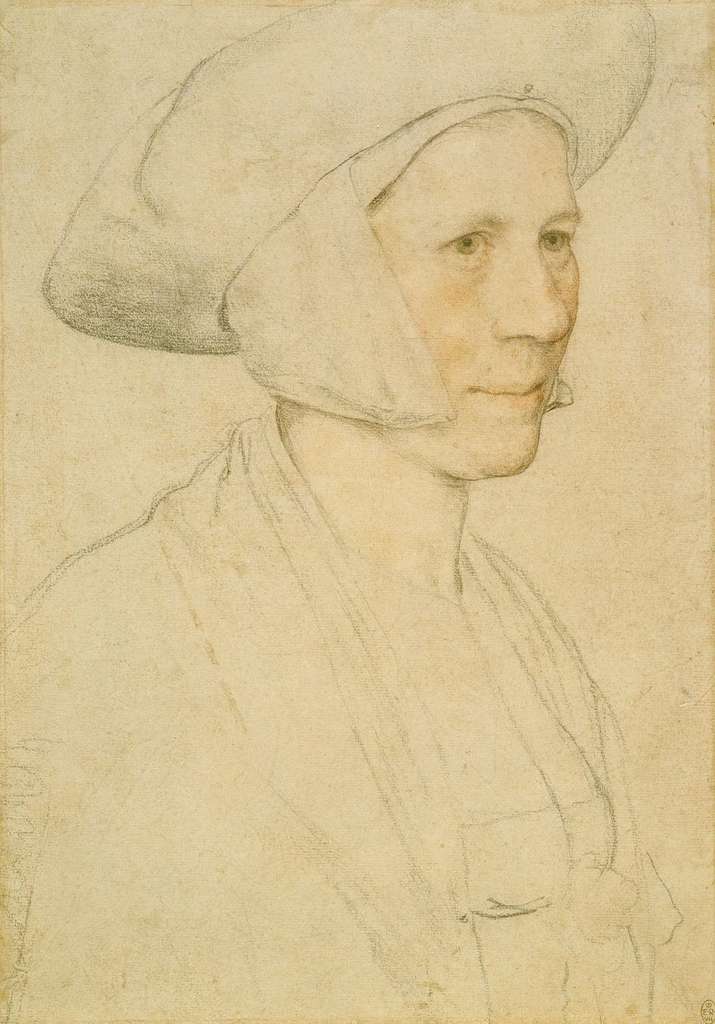Line series part 2: Nicolai Fechin and the line between order and chaos
Line series part 2: Fechin and the line between order and chaos
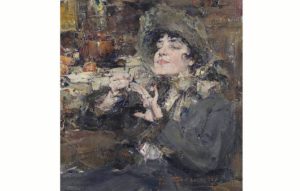
 In the previous blog in the line series, I discussed the work of Hans Holbein the Younger, one of the most influential draughtsmen in history. One of Holbein's biggest fans is someone you might not expect if you had only seen his paintings. I'm of course talking about early 20th Century Russian American artist, Nicolai Fechin.
In the previous blog in the line series, I discussed the work of Hans Holbein the Younger, one of the most influential draughtsmen in history. One of Holbein's biggest fans is someone you might not expect if you had only seen his paintings. I'm of course talking about early 20th Century Russian American artist, Nicolai Fechin.
Looking at his paintings, which contain no obvious allusion to line, you might think he was more inspired by the works of someone like Antonio Mancini. Fechin is known for his highly textural, almost abstract paintings that play on the dichotomy between chaos and order, abstraction and realism.
And unlike Holbein, Fechin’s drawings do this too. But, very much like Holbein, Fechin delicately balances his drawings on the subtle beauty of outline and accent. In his works we see a contrast between this idea of soft lighting, dramatic line work, minimal modelling and chaotic textures.
You can quite quickly see how Holbein's economic use of line and tone influenced Fechin. Indeed, Fechin actually copied several Holbein drawings.
The solidity of line
While Holbein kept his drawings clean and crisp, Fechin opted for a more varied textural approach. But the thread that holds both artists’ drawings together is that solidity of line. In Holbein’s the clean line gives form to the relative emptiness on the rest of the page. In Fechin’s the strength and certainty of line holds together the sense of chaos and disorder elsewhere in the drawing.
What sets Fechin apart from many portrait artists in history is that his sense of beauty does not conform to traditional idealisations. Instead, he sought to capture the asymmetry of the human face, the unusual and at times the grotesque. Some of his more bizarre characters might be likened to the ‘tronie’ paintings of the Dutch Golden Age.
Fechin’s drawings are unique. They are often mistaken for modern works for their boldness when in fact many contemporary artists frequently attempt and often fail to imitate him.
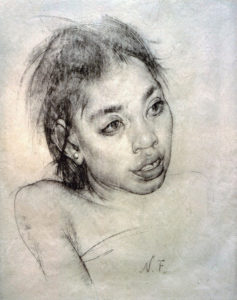
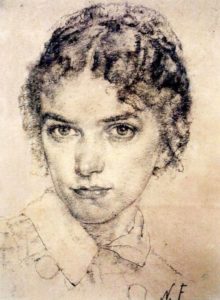
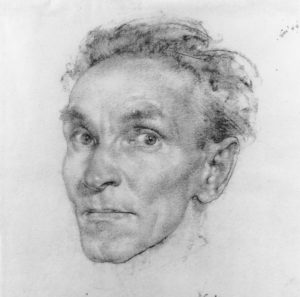


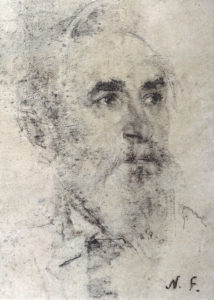
Ruth Fitton Workshop at my studio
Ruth Fitton Workshop at my studio
 This is an incredibly exciting announcement. Just one month since opening my new studio at Wimbledon Art Studios, I’ve managed to pull in Ruth Fitton, a fantastic portrait artist - one of the country’s best, in my opinion - to teach a three-day workshop. Perhaps this blog is a little late because just 18 hours after announcing on Instagram, it was completely sold out.
This is an incredibly exciting announcement. Just one month since opening my new studio at Wimbledon Art Studios, I’ve managed to pull in Ruth Fitton, a fantastic portrait artist - one of the country’s best, in my opinion - to teach a three-day workshop. Perhaps this blog is a little late because just 18 hours after announcing on Instagram, it was completely sold out.
That is perhaps no surprise considering Ruth has had a bit of a whirlwind year. She was on my radar as one to watch for the last couple of years, but she’s really flown this past 12 months and has the accolades to prove it. She has won several awards including the Purchase Award from the highly respected Art Renewal Center and the Young Artist award at the Royal Institute of Oil Painters exhibition. She’s also shown at some of the most highly regarded events in the calendar for us representational artists, including the group show ‘Five and Under’ at Arcadia Contemporary, the ARC International Salon at Sotheby’s, NYC and MEAM, Barcelona. Oh and by the way, one of her paintings has been selected to be sent to the moon (don’t worry, it won’t be the real thing). To top it all off, she is now represented by the prestigious Fine Art Commissions in London.
I love the way Ruth paints. Her colour is always fresh - classy harmonies of neutrals bolstered by hits of chroma. Her paint texture, too, is something to marvel at - the build up of several layers of paint creating intricate networks of impasto, contrasted by moments of thin wash or bare canvas.
From her quick alla prima sketches to her magnificent large-scale works, she’s really on to something.
This is what Ruth has to say about her process: “I have always been fascinated by the human face, with its unique capacity for character and communication.
“Painting from life is the core of my practice. It is balanced by a keen curiosity for texture, layers, and edges. I constantly seek the most imaginative ways to make paint replicate the feel and character of what I’m seeing.
‘Quick, immersive live studies are generally followed by intense periods of studio work. My paintings range from opulent life-sized pieces, to figures set within landscapes, to
delicate miniatures.”
Check her out on Instagram at @ruthfittonportraits
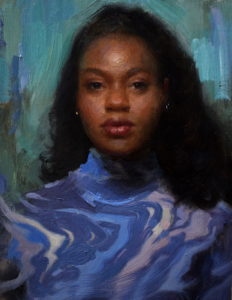


Line series part 1: Holbein’s line work and an early incidence of catfishing
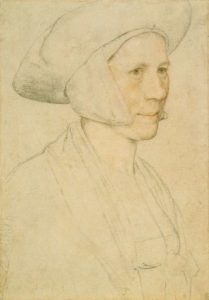
Line series part 1: Holbein’s line work and an early incidence of catfishing
Line seems to be demonised in some circles of art training today. Many of the modern ‘atelier’ styled schools dismiss it in favour of mass and shape. “There are no lines in nature” is a common refrain. “Line is simply the boundary between two masses”. Modern schools often neglect line work and worship the optical copying of value for value, shape for shape.
But this idea of drawing simply the tones that form an impression in front of our eyes is a relatively new one. Prior to the 19th Century, line was a premier tool of most draughtsmen and the sole tool for many. Think Michelangelo, Raphael, Leonardo, Rubens, Van Dyck, right through to Ingres, Watts and Leighton. Line quality can be incredibly evocative, expressive and can describe form in an intensely powerful way. It can be rhythmic, almost poetic or musical. Variety of line weight can say at least as much about the solidity and three dimensionality of an object as gradations of tone can. It is the reason the great sculptors understood so vividly the relationship between line and form.
I’ll be writing a series of posts over the coming weeks about line in all its beautiful wriggling and writhing permutations, starting now with one of its greatest masters.
The master of line
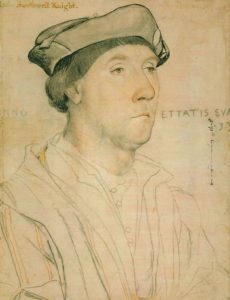 Hans Holbein the Younger’s drawings are some of the most sensitive, lifelike and three dimensional in the history of art and yet they are really very little more than careful line drawings with a touch of tone or coloured pigment. The tonal modelling is so subtle and yet the expression of form is so powerful.
Hans Holbein the Younger’s drawings are some of the most sensitive, lifelike and three dimensional in the history of art and yet they are really very little more than careful line drawings with a touch of tone or coloured pigment. The tonal modelling is so subtle and yet the expression of form is so powerful.
Note the shifts in line weight, often more delicate as the form turns away from the viewer and more intense as forms come towards. Subtle overlaps tell the viewer what forms sit in front and which recede. The minimalism of his drawings keep them fresh and draw focus to the areas of most importance – the features and the contours – while the in-between stays relatively unsaid. The crispness of his line retains a certain freshness.
Holbein did not by any means restrict his drawing media, instead often opting for a mixed media approach, with various coloured chalks and watercolour as well as metalpoint and ink – at times all in one drawing. Many of his outlines are reinforced with brush and ink, giving them at times quite a contemporary feel, almost graphic.
16th Century Catfishing
Holbein is remembered as the court painter for Henry VIII, for whom he was regularly commissioned to make portraits of the King’s potential marriage prospects. One notable case was that of Anne of Cleves, whose marriage to Henry lasted just six months and was never consummated. Henry believed Holbein had exaggerated Anne’s beauty in his depiction of her and so the King was disappointed when he saw her, remarking that “she is nothing so fair as she hath been reported”. Essentially, the King became an early catfish victim.
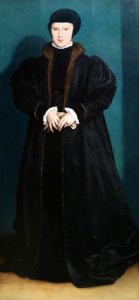
One stunning Holbein portrait, also commissioned by Henry as part of his 16th Century dating strategy, was of Christina of Denmark. While the marriage never happened for political and religious reasons, Henry was very much taken with the sketches and asked Holbein to create a full length oil which is today a part of the collection of the National Gallery.
You can see how Holbein’s line work and simple, minimal modelling translates to his paintings. The uncluttered, simply rounded forms retain their graphic power, allowing for a stronger design. The unified, compressed tones give the sitter a softer appearance, drawing focus to the features. This technique is used in a similar way today in many social media beautifying filters.
But to bring this rambling full circle, we must take a minute to marvel at the audacious use of line in Christina’s cuffs and ruff. The stark, almost comical outlines act as a bold foil to the softness of her face.
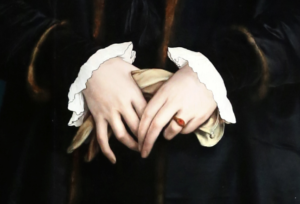
Please enjoy a few more examples of Holbein’s portrait drawings.
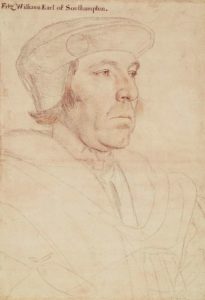
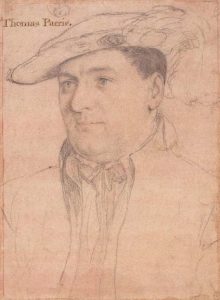
My Drawing in the Pastel Society Annual Exhibition 2021 at the Mall Galleries
My Drawing in the Pastel Society Annual Exhibition 2021 at the Mall Galleries
February | by Sam Clayden | #portraitdrawing
My Drawing in the Pastel Society Annual Exhibition 2021 at the Mall Galleries.
Last year was unusual to say the least and 2021 doesn’t promise to be significantly less strange. The pandemic has upset all sense of normality and almost nothing has avoided its impacts. Exhibitions are no exception.
The Pastel Society Annual Exhibition will feature my drawing of friend and fellow artist Jack Ford. However, they have postponed the physical exhibition and The Mall Galleries is to hold a virtual exhibition online.
There are lots of great works on display, so do check it out.
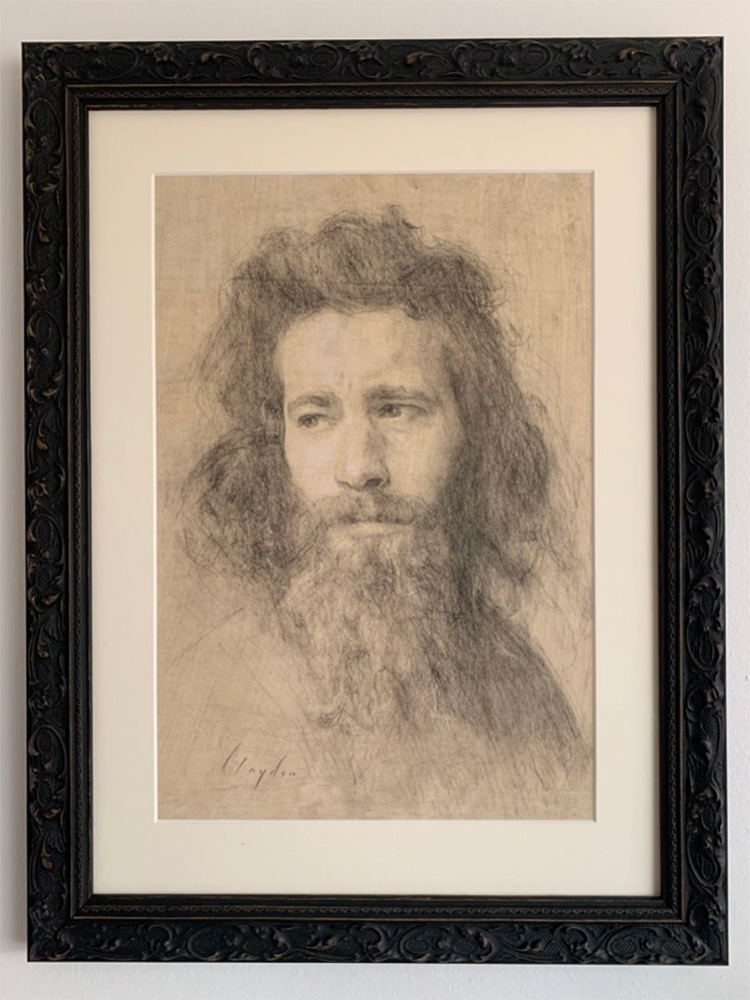
My drawing of friend and fellow artist Jack Ford was selected for the Pastel Society Annual Exhibition.
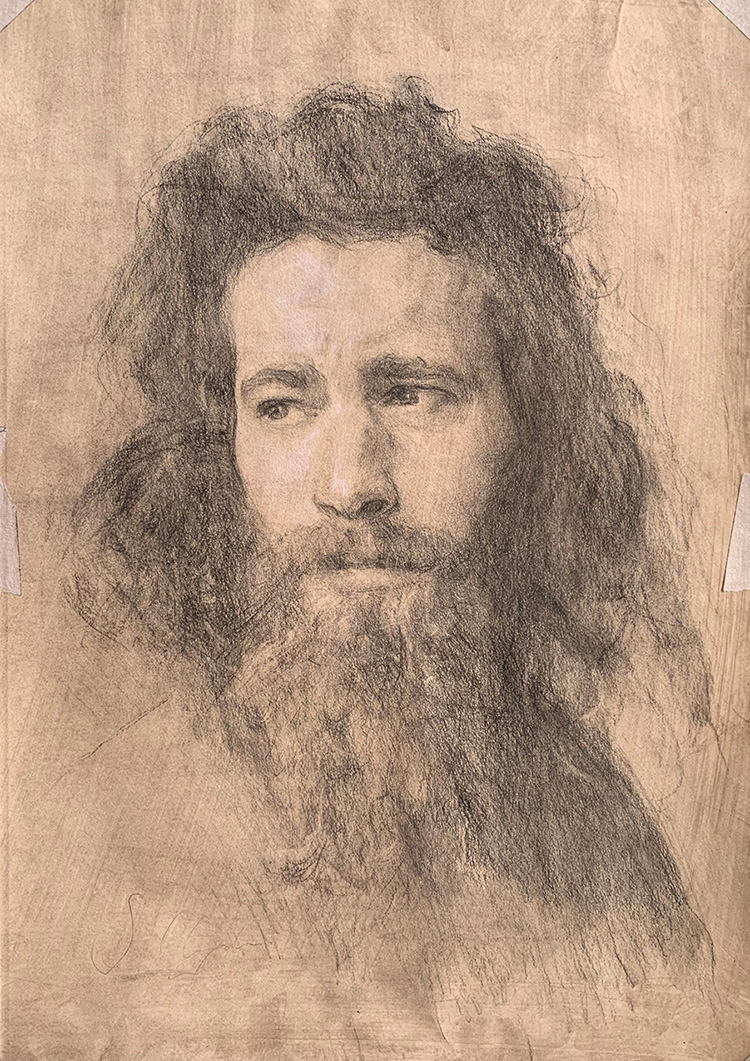
All things considered the Mall Galleries has scheduled a physical exhibition for April – we shall wait and see.
Although a minor problem in the grand scheme of things, the closing of galleries and exhibitions has been a sad consequence of the pandemic. Usually when in need of inspiration I’ll amble through the galleries of Tate Britain, reacquaint myself with some old friends at the National Gallery or sketch the antiques in the Victoria & Albert or British Museums.
In the brief windows between lockdowns, some exhibitions and galleries managed to open their doors for physical, although limited, showings. I managed to catch the Titian exhibition and stroll through the National Gallery over the summer. The very strict one way system didn’t hamper my visit despite being one of the only people in the galleries,
I hope, with the rollout of the vaccines, this year we’ll get to see more art in person.

